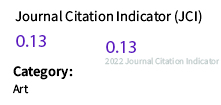About Animals, Sins and Emblems: European Tradition for an American Emblem Book
DOI:
https://doi.org/10.24310/BoLArte.2019.v0i40.5556Abstract
The publication in 1860 in New Haven (Connecticut, USA) of The Book of Similitudes, written by John Barber and aimed at the spiritual benefit of his readers, becomes a clear example of the European influence on the American emblematics of the 19th Century, since among his sources of inspiration are the series of cardiomorphic emblems and the spiritual mirrors of the soul. In this transfer of ideas, this paper analyzes a set of emblems alluding to the deadly sins allegorized by animals, through which their authors develop a catechesis transiting from the Slave of Sin to the Backslider, passing through the Repentant and the Sanctified. The study allows us to conclude that, beyond the parallelism of the message and the graphic and textual re-elaboration of the European emblems carried out by Barber to adapt them to the Methodist creed, the animalist tradition remained fully valid in America in the 19th Century in its symbolism of the deadly sins.
Downloads
Metrics
Downloads
Published
How to Cite
Issue
Section
License
Todos los contenidos publicados en la revista Boletín de Arte están sujetos a la licencia Creative Commons Reconocimento-NoComercia-Compartirigual 4.0 cuyo texto completo puede consultar en <http://creativecommons.org/licenses/by-nc-sa/4.0>

Los/as autores/as cuyas contribuciones sean aceptadas para su publicación en esta revista conservarán el derecho no exclusivo de utilizar sus contribuciones con fines académicos, de investigación y educativos, incluyendo el auto-archivo o depósito en repositorios de acceso abierto de cualquier tipo.
La edición electrónica de esta revista esta editada por la Editorial de la Universidad de Málaga (UmaEditorial), siendo necesario citar la procedencia en cualquier reproducción parcial o total.











4.png)
